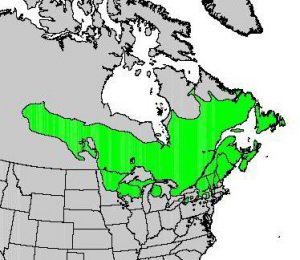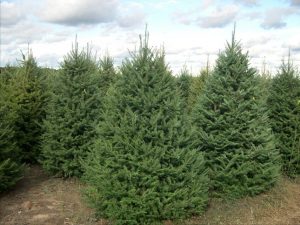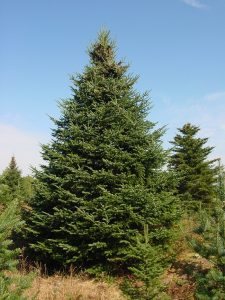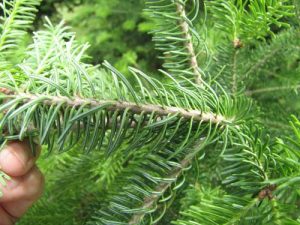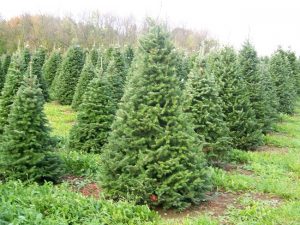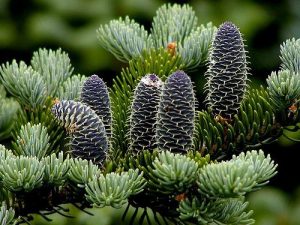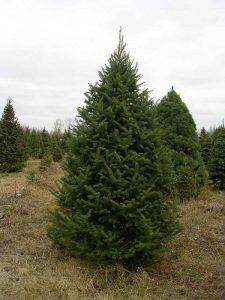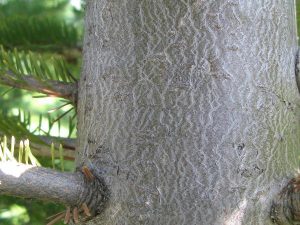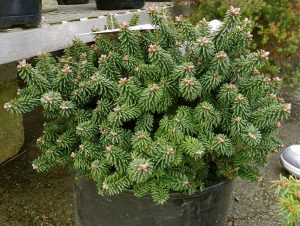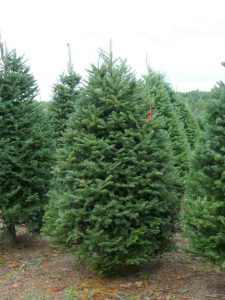Balsam Fir
Balsam fir is a species of small to medium-sized North American coniferous trees with a dense, symmetrical pyramidal crown. Known for its spicy fragrance and dark green color, the balsam fir has been commonly used as a Christmas tree over the years.
Scientific Classification
| Kingdom | Plantae |
| Division | Pinophyta |
| Class | Pinopsida |
| Order | Pinales |
| Family | Pinaceae |
| Genus | Abies |
| Scientific Name | Abies balsamea |
Quick Information
| Other Names | Canadian balsam, Bracted balsam fir/Canaan fir , Eastern fir, Sapin balsamier (French) |
| Size | 14-20 m (46-66 ft) tall; trunk diameter of around 2 ft |
| Identification | Leaves (Needles): Flat with notched tip; dark green above, two white stomatal strips below; 15-30 mm long, spirally arranged on the stem Cones: Erect, 40-80 mm long; male strobili are yellowish brown with a tinge of purple, female strobili are dark purplish Bark: Smooth, gray, with resin blisters when young; turn rough, scaly, and fissured at maturity |
| Tree Type | Evergreen |
| Distribution/Range | Alberta, Manitoba, Labrador, Newfoundland Island, Ontario, Nova Scotia, New Brunswick, Saskatchewan, Quebec, and Prince Edward Island (in Canada); Wisconsin, Virginia, New York, Vermont, Minnesota, New Jersey, Pennsylvania, Michigan, Iowa, Connecticut (in the US) |
| Hardiness Zones | 3-5 |
| Growth Rate | Slow; annual increase of height is less than 12 in |
| Lifespan | 150-200 years |
| Growing Conditions | Winter Conditions: Very cold; average winter temperature ranging between -18° C and -12° C Summer Conditions: Pleasant weather with average temperature ranging between 16° C and 18° C Rain: Grows best in areas annual precipitation is from 760-1100 mm Sunlight: Full sun, partial shade Soil Requirements: Cool, well-drained, moist, acidic soil; somewhat tolerant to salty soil |
| Diseases and Pests | Red heart rot, root and butt rot, brown cubical rots, white stringy rots, and witches’ broom disease; insects such as balsam wooly adelgid and spruce budworm |
| Flowering/Fruiting | Flower buds open during late May-early June, though flowering can occur early in late April |
| Breeding System | Monoecious |
| Seed Production | Regular seed production occurs after 20-30 years |
| Seedling Development | Germination takes place from late May-early July; seedlings in the open sustain drought and frost heaving damage |
| Wildlife Value | Mice, voles, squirrels, and grouse feed on the buds and seeds; moose, white-tailed deer, and snowshoe hares use it for cover, shelter, and food; black bears also browse the bark; lepidopteran caterpillars and Io moth feed on the needles |
| Varieties/Cultivars |
|
| Uses | Lumber for crates, paneling, and light-frame construction; wood is used for making pulp; needles are used as the filling for souvenir pillows, and making wreaths, incense sticks, and candles; needle extracts are used for producing essential oil |
| IUCN Conservation Status | Least Concern |
Balsam Fir vs. Fraser Fir
The Balsam fir grows shorter than the Fraser fir, and its bracts are shorter than its cone scales while those on the Fraser fir are longer than the seed scales. Moreover, Balsam firs have longer needles as compared to those of Fraser firs.
Interesting Facts
- Hudson fir, a cultivar of balsamea, has been granted the Award of Garden Merit by the Royal Horticultural Society.
- The Balsam fir resin was once used for treating various health conditions. It was used as an adhesive for optical instruments and glasses, and for mounting specimens under a microscope.
- Balsam fir has been officially recognized as the tree emblem of the Canadian province of New Brunswick.
References
- https://www.fs.usda.gov/nrs/atlas/tree/v3/12
- https://www.arborday.org/trees/treeguide/TreeDetail.cfm?ItemID=1105
- https://en.wikipedia.org/wiki/Abies_balsamea
- https://gobotany.nativeplanttrust.org/species/abies/balsamea/
- https://www.iucnredlist.org/species/42272/2968717


